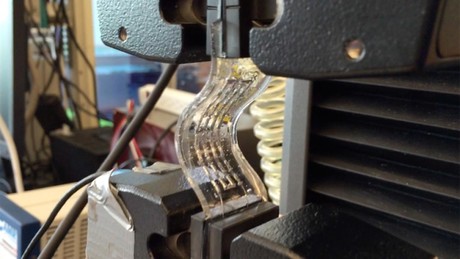Flexible wearables use body heat for energy

Researchers at North Carolina State University have designed a flexible thermoelectric energy harvester that has the potential to rival existing wearable electronic devices using body heat as the only source of energy. Their work has been published in the journal Applied Energy.
Wearable devices used to monitor health and environmental measures are becoming increasingly popular. However, the performance and efficiency of flexible devices are still lacking in comparison to their rigid counterparts, which are typically superior in their ability to convert body heat into usable energy.
Professor Mehmet Ozturk, corresponding author on the paper, said flexible devices are preferable as wearables when it comes to contact resistance, as well as the ergonomic and comfort considerations to the device wearer.
“We wanted to design a flexible thermoelectric harvester that does not compromise on the material quality of rigid devices yet provides similar or better efficiency,” he said.
Professor Ozturk said and his colleagues wanted to utilise the best thermoelectric materials used in rigid devices in a flexible package so that manufacturers wouldn’t need to develop new materials when creating flexible devices. One of the key challenges of this was to connect thermoelectric elements in series using reliable, low-resistivity interconnects.
“We use a liquid metal of gallium and indium — a common, non-toxic alloy called EGaIn — to connect the thermoelectric ‘legs’,” Professor Ozturk said. “The electric resistance of these connections is very low, which is critical since the generated power is inversely proportional to the resistance. Low resistance means more power.
“Using liquid metal also adds a self-healing function. If a connection is broken, the liquid metal will reconnect to make the device work efficiently again. Rigid devices are not able to heal themselves.”
Professor Ozturk said future work will focus on improving the efficiencies of these flexible devices, by using materials and techniques to further eliminate parasitic resistances. He and his group currently have a pending patent application on the technology.
Single transistor used to implement neuromorphic behaviour
Researchers have demonstrated that a single transistor can mimic neural and synaptic behaviours,...
Novel fabrication technique for flexible electronics
Researchers have harnessed nature's intrinsic hierarchical fractal structures to improve the...
Novel antenna tech developed for 6G communications
Researchers have developed a novel metasurface antenna that can generate and control multiple...





